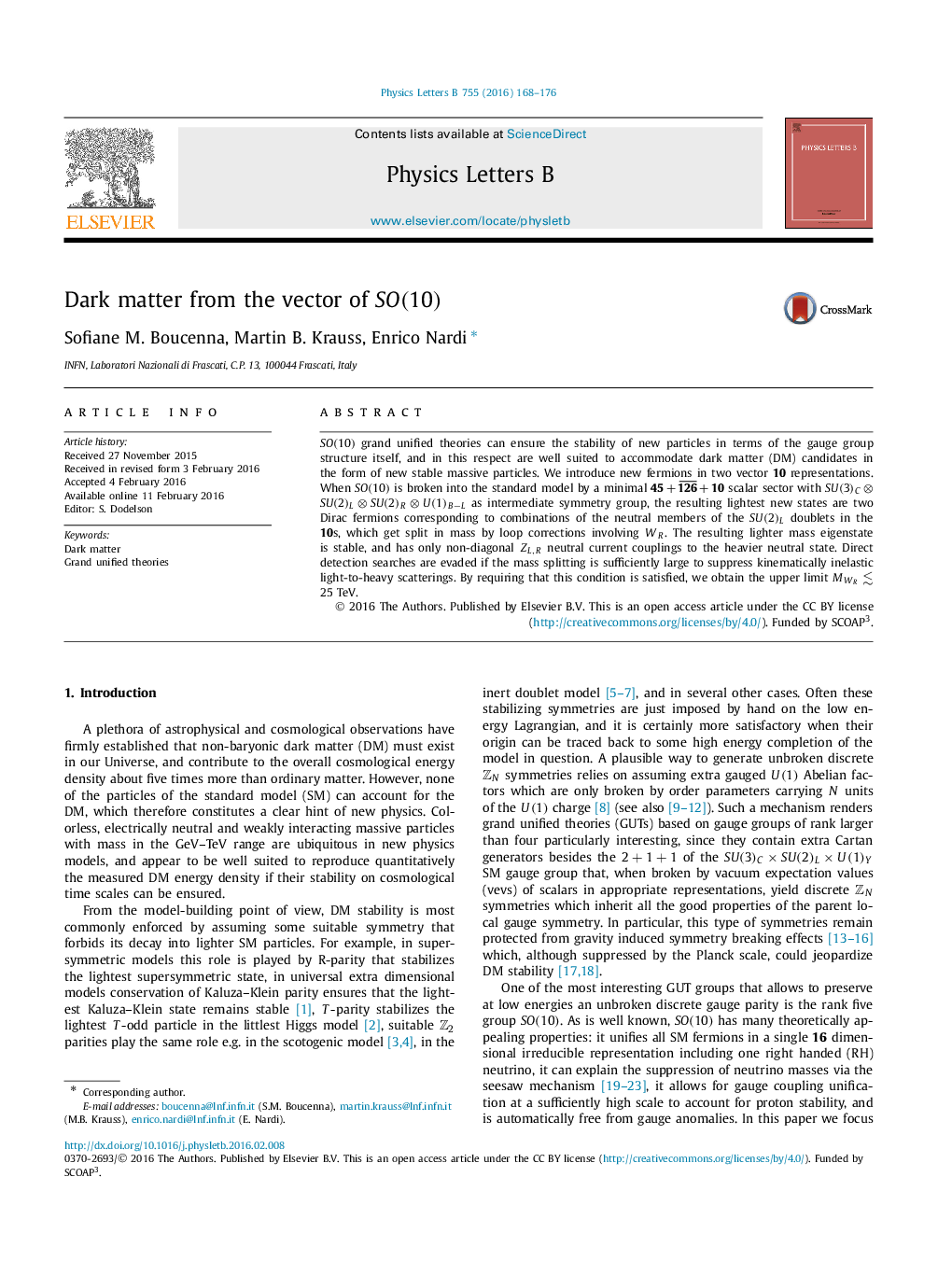| Article ID | Journal | Published Year | Pages | File Type |
|---|---|---|---|---|
| 1850292 | Physics Letters B | 2016 | 9 Pages |
SO(10)SO(10) grand unified theories can ensure the stability of new particles in terms of the gauge group structure itself, and in this respect are well suited to accommodate dark matter (DM) candidates in the form of new stable massive particles. We introduce new fermions in two vector 10 representations. When SO(10)SO(10) is broken into the standard model by a minimal 45+126‾+10 scalar sector with SU(3)C⊗SU(2)L⊗SU(2)R⊗U(1)B−LSU(3)C⊗SU(2)L⊗SU(2)R⊗U(1)B−L as intermediate symmetry group, the resulting lightest new states are two Dirac fermions corresponding to combinations of the neutral members of the SU(2)LSU(2)L doublets in the 10s, which get split in mass by loop corrections involving WRWR. The resulting lighter mass eigenstate is stable, and has only non-diagonal ZL,RZL,R neutral current couplings to the heavier neutral state. Direct detection searches are evaded if the mass splitting is sufficiently large to suppress kinematically inelastic light-to-heavy scatterings. By requiring that this condition is satisfied, we obtain the upper limit MWR≲25 TeVMWR≲25 TeV.
